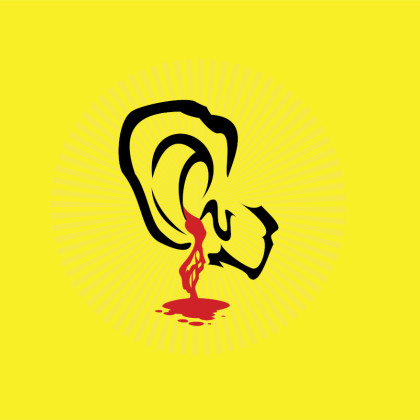Horse is a Horse is a Horse is a Horse
insert your right foot into the right stirrup.
Select a well-trained horse if you're a beginner. Horses that are younger or poorly trained may shift and move during mounting. Choose an older horse with a reputation for being calm and cooperative during rides.
If someone doesn't hold the horse's head as you mount, you should hold the reins tightly in your left hand, but not so tightly that the horse backs away from the pressure
[Image titled Ride a Horse Step 2]
2
At what age should a rider be when he stops riding horses?
Community Answer
It would all depend on the rider, but most healthy people can do it their entire lives.
Not Helpful 34Helpful 128
Question
How do I turn a horse with their mane instead? Like if I am riding bare back.
Community Answer
When your riding bareback you normally just steer with you legs and hold on to the mane, however, you could gently pull left or right. It may not work if your horse isn't obedient, but its worth a go.
Not Helpful 24Helpful 86
Question
What is a working trot?
Community Answer
A working trot is a trot that gets the horse moving and active. Unlike the jog, you will have to post this trot. The working trot is the "normal" trot which the horse does on a normal bases.
Not Helpful 22Helpful 85
Question
What is the word for a right turn on a horse?
Community Answer
There are no words for it if you're on horseback. But, driving a wagon or cart, "gee" means right and "haw" means left.
Not Helpful 18Helpful 65
Question
What is the object that I step up onto to mount my horse?
Community Answer
You would step on a mounting block, fence rail, or get a leg up from another rider.
Not Helpful 18Helpful 68
Question
How can I tell what horse is the best for me?
Community Answer
If you are a beginner, consider contacting a trainer, or whoever you will be taking lessons from. Ride the horse that they recommend until you know how to ride. Once you are comfortable riding, use your own knowledge to decide for yourself. Don't buy a horse until you have taken lessons and learned what horse is right for you!
Not Helpful 32Helpful 108
Question
What if my horse is going really fast and it's hard to pull back? What do I do?
Ariel Griffith
Community Answer
Ask them to come into a large circle, and start making it smaller until they slow down, then start making it bigger. If they speed up again, tighten the circle again. It may take a few sessions until they get it, just be patient.
Not Helpful 4Helpful 26
Question
How tall do I have to be as a beginner to be able to get a regular size horse, like a Budweiser horse?
Community Answer
The Budweiser horses are draft horses, which means that they are a lot taller than normal horses. To ride a normal horse, you can be anywhere from age 8 and up, you just need to find the right sized horse and tack for your needs.
Not Helpful 26Helpful 83
Question
How do I stop the horse from walking or running while I am mounted?
Community Answer
If you're a beginner, have someone hold the horse under the chin. If it tries to wander, gently pull on the reins. Repeat this action until it learns not to move while you mount.
Not Helpful 27Helpful 85
Question
What does it mean by sit deep in the saddle?
Community Answer
To sit deep in the saddle means to put your weight on the stirrup irons and the saddle's seat and not the pommel. When you are in a rising trot, it helps when you land to think about the rises and falls of the trot's pace and feel comfortable as you land in to the seat (not the pommel/monkey strap) .
Position yourself for balance. Once in the saddle, take a moment to make sure you're in the proper position for balance. Keep your back straight. Keep in mind when you ride a horse you should be able to draw a straight line through your ear, shoulder, hip, and heel. Keep your shoulders even and straight as well, with the bulk of your weight resting on your seat bones in your buttocks.[2]
[Image titled Ride a Horse Step 3]
3
Get your legs in the right position. Once you feel securely balanced, get your legs into the proper position. This can be particularly difficult for beginning riders so take time to make sure your legs are positioned properly. Keep your heels right under your hips.
Your legs should be turned inward. Many beginning riders have their legs turned outward, as this can feel more natural, with their knees sticking out. Remember, you're sort of hugging the horse with your legs. You shouldn't squeeze the horse too tightly, but have your legs curved inwards towards the horse.[3]
Your toes should rest higher than your heels. An easy stretch or practice for this is to stand on something higher than the ground or even a staircase and push your heels down keeping the balls of your feet on the staircase.[4]
[Image titled Ride a Horse Step 4]
4
Hold the reins properly. Once your legs are in the right position, make sure you're holding the reins properly. How you hold the reins depends on whether you're riding English or Western.
For English style, make a fist and then pass the reins through the fist so the loop of the reins faces upward. Then, remove both your pinky fingers from the fist and place them on the outside of the reins. Place your thumbs on top of the reins, securing them in place.[5]
In Western, the reins do not form a loop. The western bridle has reins that are knotted at the top. Keep the reins loose at all times and hold them in two fists.[6]
Score
0 / 4
Part 1 Quiz
How should you position your legs once you've mounted the horse?
Turned outward
Turned inward
Held as straight as possiblePart2
Riding Basics (English Style)
[Image titled Ride a Horse Step 5]
1
Learn the different ways to signal your horse to move. When riding English style, there are a variety of ways you can signal your horse to move.
Starting off, try gently squeezing your horse's side with your legs. This should signal your horse to walk.[7]
If your horse does not respond to this, he may need further prompting. You can gently kick your horse with your heels. Do not kick too hard, however. While horses have thick hides, they may experience pain if you kick with too much force. A gentle tapping is generally all it takes to get a horse to walk.[8]
Verbal cues also help in some cases. Depending on how a horse was trained, he may respond to clicking of the tongue and other noises. Ask the horse's trainer if there are any noises he responds to.[9]
[Image titled Ride a Horse Step 6]
2
Follow the movements of a horses head with your arms. When a horse wal
How to Ride a Horse
Co-authored by Pippa Elliott, MRCVS
Updated: November 13, 2019
Explore this ArticleLaying the Groundwork for Mounting and SittingRiding Basics (English Style)Riding Basics (Western Style)Show 1 more...Article SummaryQuestions & AnswersRelated ArticlesReferences
Riding a horse can be a fun experience. However, it takes a great deal of training and experience to learn to ride a horse properly. Make sure you know how to mount, steer, and signal your horse to move properly. Also, you must know how to train your horse and do groundwork with them before riding! Groundwork is the most important thing about riding horses and you must do it every time before riding your horse. Groundwork helps calm your horse and lets your horse know that you're the boss before you get on them!
Part1
Laying the Groundwork for Mounting and Sitting
[Image titled Ride a Horse Step 1]
1
Why a Horse With a Broken Leg Often Must Be Euthanized
By Katherine Blocksdorf
Mount your horse. The first thing you'll want to do when riding a horse is to do some groundwork. You don't need to do heaps and make your horse tired, but you only need to do a little bit of groundwork! The next thing you will want to do is mount your horse correctly! Many people are intimidated by the idea of mounting a horse but if you stay calm it should be fun and easy.
Western style uses neck reining but English style does not.
English style uses leg squeezes to prompt the horse to walk, but Western style does not.
Western style signals a change in direction to the horse by slapping the horse's hindquarters but English style does not.
English style relies only on hands for steering while Western style steering uses the full body.
Western style reins should be looped around your fist but English style reins are kept loose at all times.Part4
Getting Further Training
[Image titled Ride a Horse Step 15]
1
Take lessons at a stable. Horseback riding can be very difficult and takes a lot of time and patience. Try to find a reputable stable in your area and take lessons from an established trainer. It's a good idea to have supervision when beginning to take riding lessons in case of an injury to you or the horse.
[Image titled Ride a Horse Step 16]
2
Learn to groom a horse. Horses are groomed somewhat differently, depending on whether they're kept indoors or outdoors. Always refer to the instructions and the guidelines given by the horse's owner. There are some general rules, however. You should usually groom a horse before riding him.
Use a body brush to brush the horse's fur all over its body, removing the dust, sweat and loose hair from the horses coat. Use the mane-and-tail comb on the mane and tail, appropriately.[23]
Next, use a dandy brush on the body and legs of the horse, removing mud and sweat. This brush has harder bristles, which shouldn't be used on the face, mane, or tail of the horse.
Use the hoof pick to remove mud, dirt, and pebbles from the horse's hooves. If this is not done before you ride, your horse may get a sore foot and go lame.
Use a rubber or plastic curry comb on the body of the horse for removing loose hair and mud from the horses coat. Metal curry combs are used for removing loose hair from horses that are shedding heavily.
[Image titled Ride a Horse Step 17]
3
Learn to tack and bridle your horse. Before you ride, a horse needs to be outfitted with a saddle and bridle.
To saddle a horse, position the saddle blanket above the horse's withers and push it back toward the hind-legs to smooth the hair. Place the saddle behind the shoulder and pull the blanket into the empty area at the front of the saddle.
Attach the cinch or girth and tighten it gently, allowing the horse enough room to exhale comfortably. You should be able to fit two fingers under the cinch or girth, but no more.
Make sure you've got a bridle appropriate for your horse's size. Gently place the bit near the horses mouth. Most horses will open their mouths as they're used to bridles, but if your horse doesn't gently push your fingers into the sides of the horse's mouth. Slip the bit in slowly, then slip the top of the bridle over the horse's ears. Secure all the straps and buckles, buckling tight enough that you can only comfortably fit one finger under the straps.
If you're a first time rider, it's not a bad idea to use a mounting block. This is a small wooden structure that you can use to stand on in order to mount the horse. [1] You should also ask someone to hold the horse's head as you mount. #*Mount the horse from its left near side. Place your left foot in the left stirrup and launch your body up and over. Next, lift the right leg gently over the horse's back and ks, canters, or gallops, his head moves back and forth with the rhythm of his body. Allow your hands to bob back and forth with the horse's head. Not following the horse's movements can hurt the horse. When starting a canter, let the horse have a lot of rein because they stretch out their neck when cantering.[10]
[Image titled Ride a Horse Step 7]
3
Learn to steer. It's important you learn how to steer your horse. Steering in English style if fairly self explanatory.
You keep more contact with the horse's mouth while riding English. To signal the horse to turn right, very lightly pull back with your right hand. To signal the horse to turn left, very lightly pull back with your left hand. If the horse does not respond to the lighter pulling, you can gradually begin to pull slightly harder until the horse responds.[11]
You should also use your legs and body to signal a horse to move. Looking in the direction you wish to move helps. Horse's can feel your seat bones move. You should also gently squeeze your legs to signal a horse to change direction. For example, squeeze your left leg if you want your horse to turn right as the horse will want to move away from the pressure.[12]
[Image titled Ride a Horse Step 8]
4
Learn how to trot. Once you're confident at the walk, gently press your legs into the horse's sides to cue the horse to trot. Sit deep in the saddle and keep contact with your legs. Be careful to keep your elbows relaxed, so you don't jerk on your horse's mouth.[13]
Some riders prefer to do a "posting trot" as opposed to a sitting trot. This can be more comfortable as a trot is a bouncing gait. To do a "posting trot" simply rise when the horses outside shoulder moves forwards, and gently sit back down in the saddle, as to avoid bouncing heavily on the horses back. [14]
[Image titled Ride a Horse Step 9]
5
Move your outside leg back and squeeze to canter the horse. Cantering is a quicker three-beat speed that's natural to all horses. When you canter, your seat will roll with the canter and you stay in the position you normally ride in. Before you canter, make sure you are comfortable with both posting trot and sitting trot as both of these are major key points. Getting the timing right to get a horse to canter takes time.
Try not to tense up. Most beginners will find it beneficial to hold onto a saddle or neck strap while learning to canter to help with their balance so they don't fall.
If your horse just moves into a faster trot when you signal it to canter, ask your horse to walk and continue asking him to canter from the walk instead of the trot. Before learning to canter make sure you know posting trot, and sitting trot. Before cantering, gently squeeze your outside rein to slow your horse to a half halt in a trot before using your inside leg by the girth and then soon adding your outside leg behind the girth to give your horse a bit of a push forward.
[Image titled Ride a Horse Step 10]
6
Practice more advanced riding as you feel ready. Galloping, jumping, and dressage tricks are all fun to learn in English style. However, you should hold off until you've mastered the basics. Spend at least a few months practicing the above techniques before trying anything new. Galloping and jumping especially can be dangerous if you're inexperienced.[15]
Score
0 / 4
Updated 11/09/19
[injured horse leg]
CasaraGuru / iStock
It wasn't that long ago that if a horse broke a leg, euthanasia was the only course of action. Breaks are most commonly heard of in racehorses, but any horse can break a bone in its leg.
While euthanasia is often still the only option, advances in veterinary technologies and techniques mean some horses can be saved, and may even be able to return to their work in some capacity. But saving every horse with a fracture is still a long way off. Here's why.
When a Human Breaks a Leg
If a human breaks a leg, the worst-case scenario is surgery to place pins to hold the bones, a cast and weeks or months of allowing the bone to heal followed by physiotherapy. Our bodies are relatively light compared to a horse's and our leg bones are larger in ratio to a horse's.
We also know that we must stay off of the injured leg so that the fracture mends properly without stressing or damaging the healing bone. Most people, no matter how complicated their fracture, will probably survive their fracture unless there is some sort of unusual complication.
When a Horse Breaks a Leg
Unlike humans, horses have heavy bodies and light leg bones. This is the way we've developed many breeds, especially Thoroughbreds. When bones break, it often means they shatter. And it's almost impossible to surgically reconstruct the fractured leg.
While humans have some large muscles and a bit of tissue below the knee that helps stabilize a broken bone, along with a cast, a horse has no muscle or any other tissue besides tendons and ligaments below the knee.
The lack of muscle and other tissue means, even with a cast, the broken bone has little to support it. And, it's much harder to prevent a horse from using its broken leg to bear weight. Horses stand most of the time, and a horse is likely to instinctively flee when it's startled, instead of reasoning that it must keep weight off of its fractured leg. This makes the chances of re-injury high.
Horses' Legs Bear a Lot of Stress
Horses put a huge amount of stress on their legs, especially when galloping and jumping. And, there are many fragile bones below the knee and hock. Some of the bones are within the hoof, and when they shatter, they are far more difficult to stabilize and let heal.
Over half of the horse's weight is borne on the front legs, so those bones and joints, in particular, take a lot of abuse. Even if a horse's bones are healing, other complications can set in, such as static laminitis, making it difficult for the horse to fully recover without ongoing severe pain.
Fractures That Can and Can’t Be Repaired
The less complicated the fracture, the more likely the horse will recover. Greenstick and stress fractures are incomplete fractures, and these can be treated successfully. Simple fractures, where there is one clean break, are more likely to heal successfully than shattered bones.
Compound fractures, where a broken bone penetrates through the skin, are less likely to repair, and in many cases result in euthanasia. Fractures that involve the joints such as pasterns are often irreparable. Fractures that happen above the knee are also difficult to repair.
Signs of a Horse With a Broken Leg
A horse that has fractured a leg will be in obvious distress. It will not want to bear weight on the leg and there will be swelling. The leg can hang crookedly, or a bone may appear to be coming through the skin.
As soon as possible, have a veterinarian examine the horse. Further movement can mean the horse can cause additional injury to itself, so it must be kept as still as possible. If the veterinarian determines the fracture can be repaired, the horse may be transported to a veterinary hospital.
Part 2 Quiz
How do you sit during a posting trot?
Keep your body still.
Hold your body up so only your legs have contact with the horse.
Rise when the horse's outside shoulder moves forward and then sit down gently.
Rise when the horse's outside shoulder moves forward and then let yourself fall back onto the horse.Part3
Riding Basics (Western Style)
[Image titled Ride a Horse Step 11]
1
Learn to neck rein. Steering is slightly different in Western style than it is in English style When riding Western, you use a technique called "neck reining."
Neck reining means you hold the reins loosely and gently touch the horse's neck to signal movements. [16]
To turn right, move the reins across the horse's neck to the right. To go left, move the reins across the horse's neck to the left.[17]
Always hold the reins in your left hand. Keep your right hand on your right thigh.[18]
As with English riding, make sure you use your full body to steer as well. Use your legs and seat bones in addition to your hands.
[Image titled Ride a Horse Step 12]
2
Direct rein during emergencies. If you need to steer your horse quickly, it's recommended you momentarily switch to English style steering. If your horse is not responding to neck reining, grab the reins in both hands. Gently pull or squeeze the left rein to turn left and the right rein to turn right.[19]
[Image titled Ride a Horse Step 13]
3
Walk your horse. Start out walking gently. In Western, you also squeeze your horse to get him to walk. You should follow the motion of his head again, but as you hold the reins looser you might not move your hands as much as you would in English.[20]
[Image titled Ride a Horse Step 14]
4
Jog your horse. While your horse is walking, squeeze his sides gently to signal to him to jog. Trotting is not usually a part of Western style riding.
A jog is a slow, steady gait. It's a little quicker paced than a walk but not as jaunty as an English trot.[21]
You can easily sit in a Western jog. Posting trot is not necessary when riding western style.[22]
Score
0 / 4
Part 3 Quiz
How is steering different in Western style compared to English style?











Dodaj komentar
Komentiraj